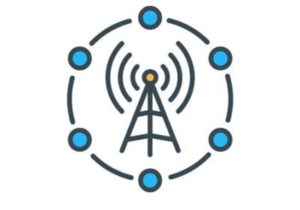
The Federal Communications Commission (FCC) and the Department of Transportation (DOT), two agencies of the same administration, continue to do battle with each other over the use of a set of airwaves set aside years ago for vehicle-to-vehicle communication technology.
The airwaves in question — a 75 MHz swath — were set aside 20 years ago for the future development of a vehicle safety communication system but that has yet to come to fruition. In December, the FCC unanimously voted to take over the spectrum in order to expand WiFi service in the U.S.
Objections to the vote from the DOT and the 5G Automotive Association were immediate, as the groups wanted to preserve its intended use for vehicle-to-vehicle communications and traffic management in anticipation of the increase in the number of self-driving and semi-autonomous vehicles in the country.
While the DOT continues to put money toward connected car tech, it argues that the FCC’s move could cause America to fall behind in the development of self-driving cars and could ultimately cost lives in the long run.
The FCC, on the other hand, says automakers have squandered their chance to use the spectrum for its intended purposes, and instead it would be better utilized to support the growing demand for WiFi service with increased use of mobile services and smartphones.
The FCC’s plans involve repurposing roughly 45 of the 75 MHz frequencies for WiFi, while leaving the remaining 30 MHz for connected car tech, with the DOT and safety advocates arguing that’s not enough, and that the inclusion of WiFi in the spectrum could also cause interference with any safety systems implemented.
The two departments do not appear ready to back down from the dispute. DOT secretary Elaine Chao wrote a letter to FCC chair Ajit Pai in November saying that the “DOT has significant concerns with the Commission’s proposal,” and that it “jeopardizes the significant transportation safety benefits that the allocation of this band was meant to foster.”
In a statement to Axios, an FCC spokesperson responded by saying: “We would encourage the Department of Transportation to contribute productively to this important discussion rather than devoting its efforts to defending the failed status quo.”
With the FCC already having voted to proceed with the allocation, the DOT is counting on the support of advocacy groups like Mothers Against Drunk Driving (MADD) and a groundswell of public uproar to convince Congress to get involved and force the FCC to rethink its plan.
Source: Axios

Follow Us